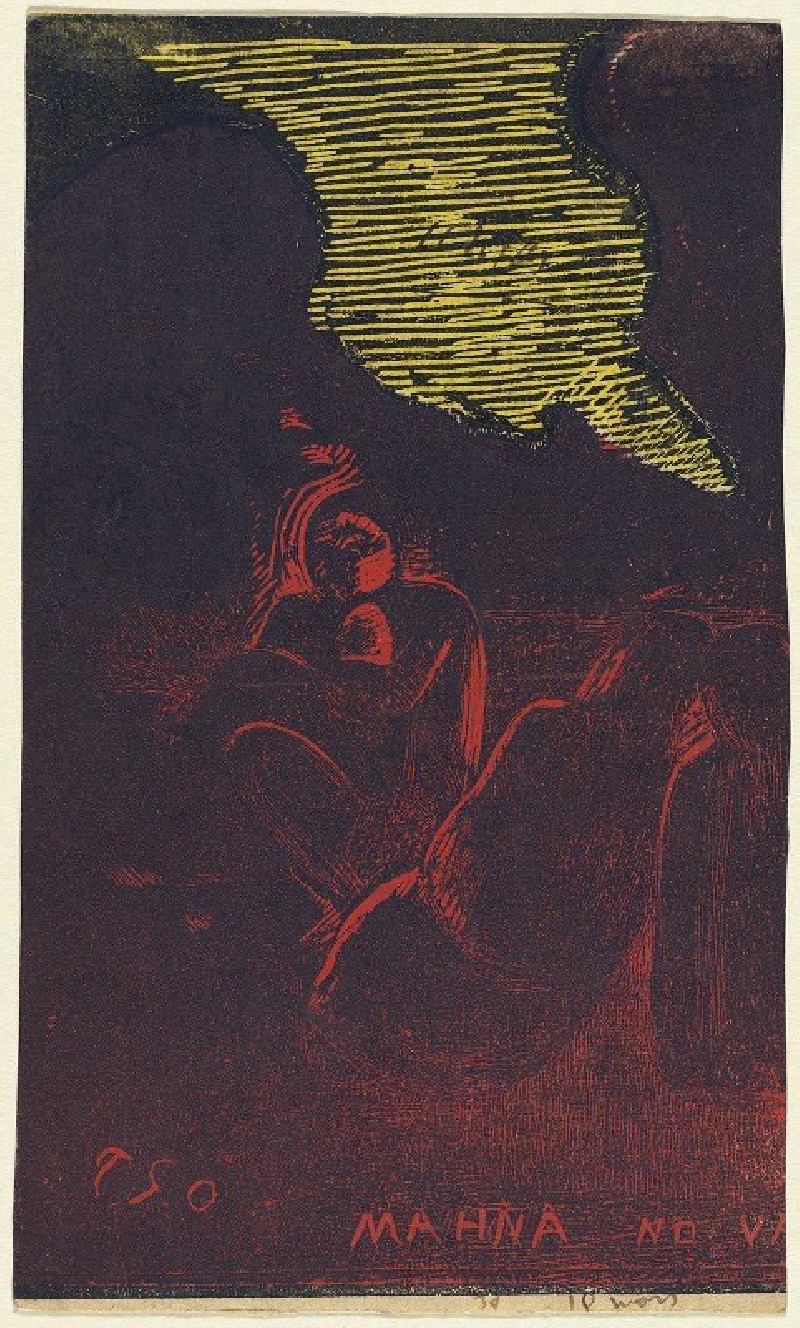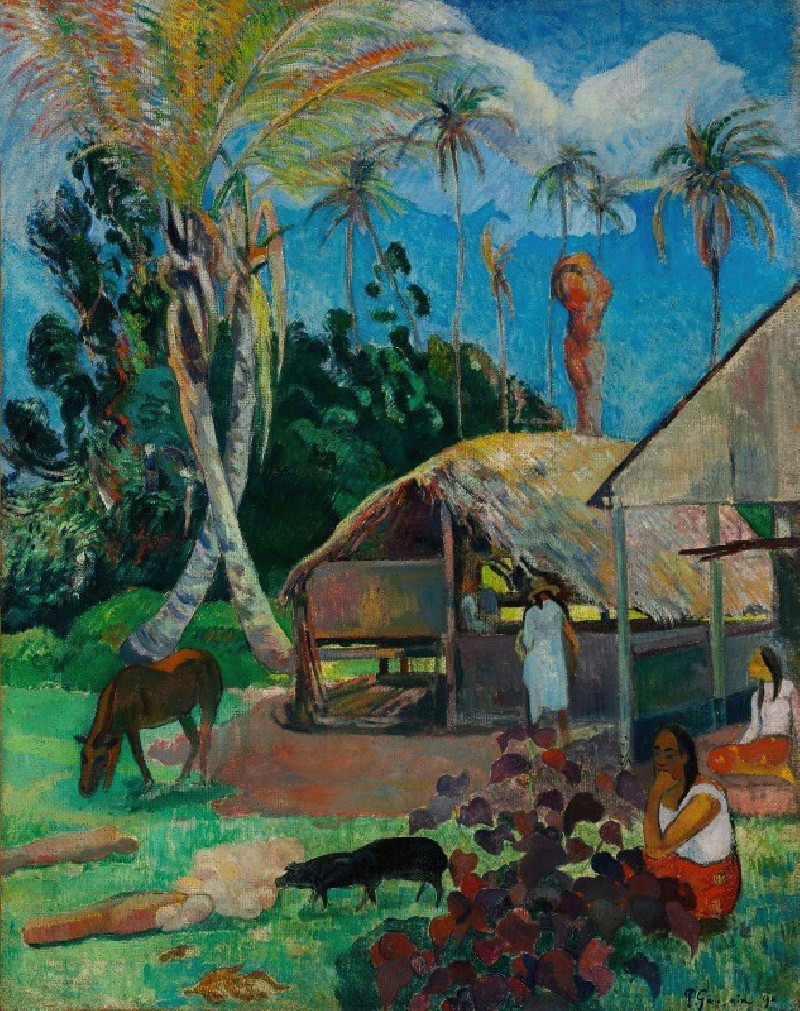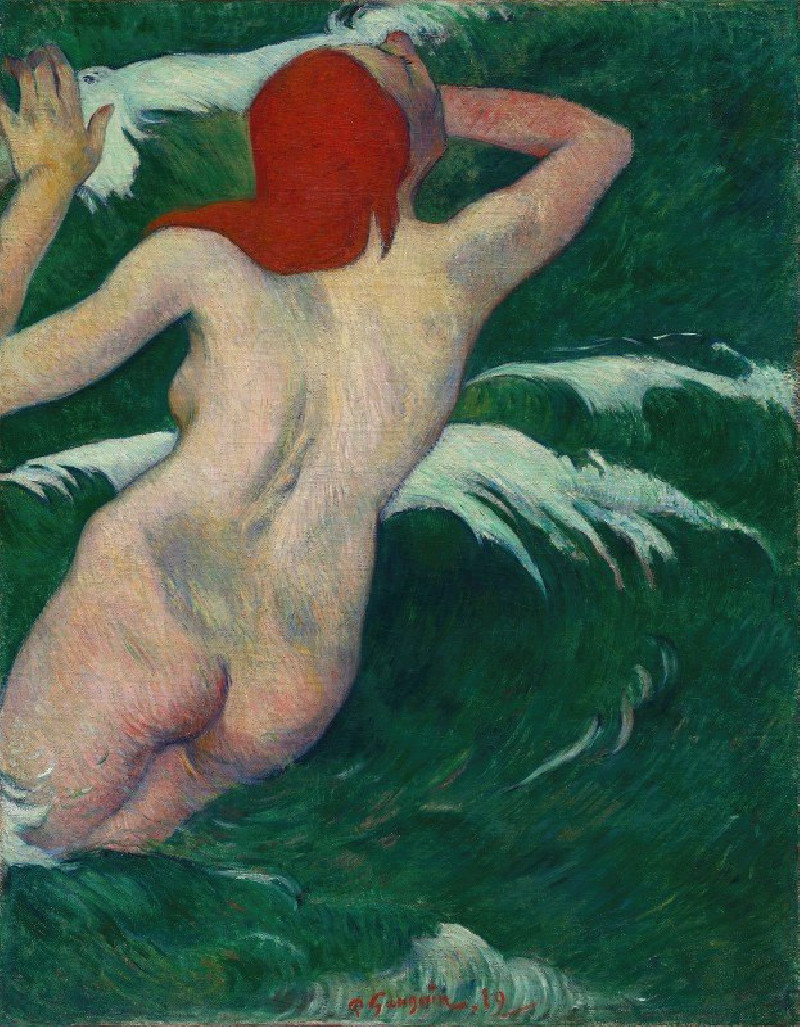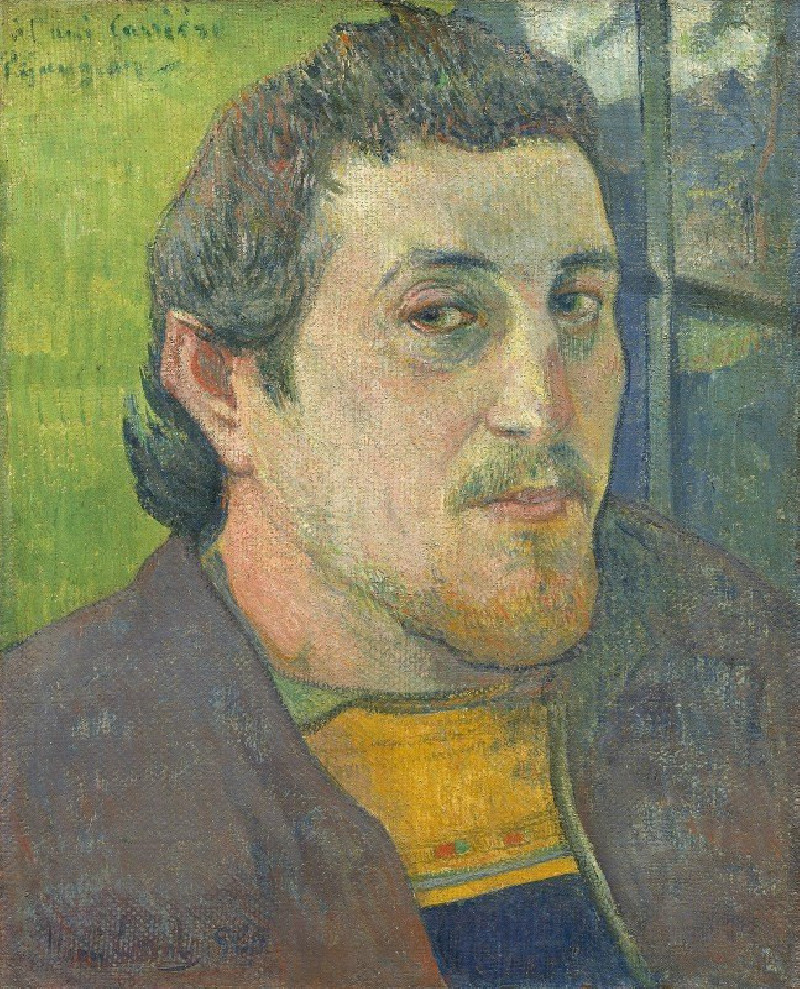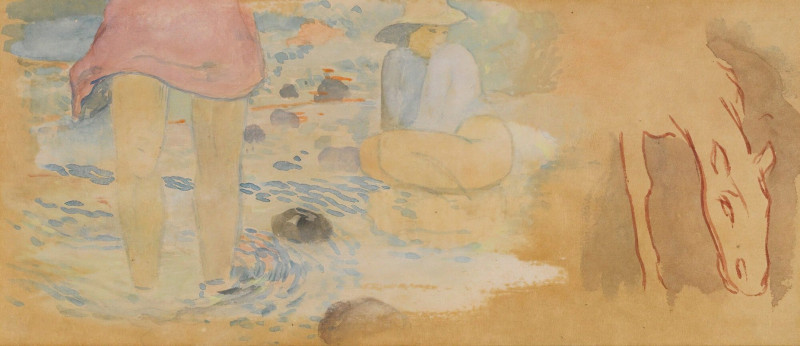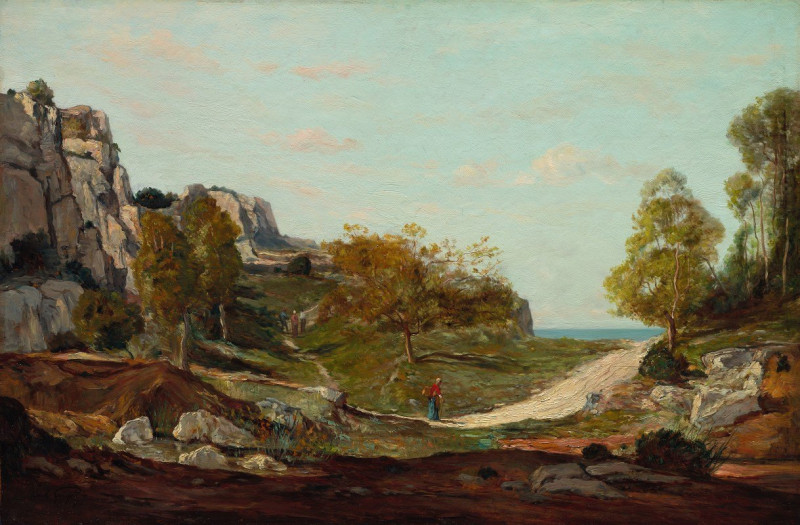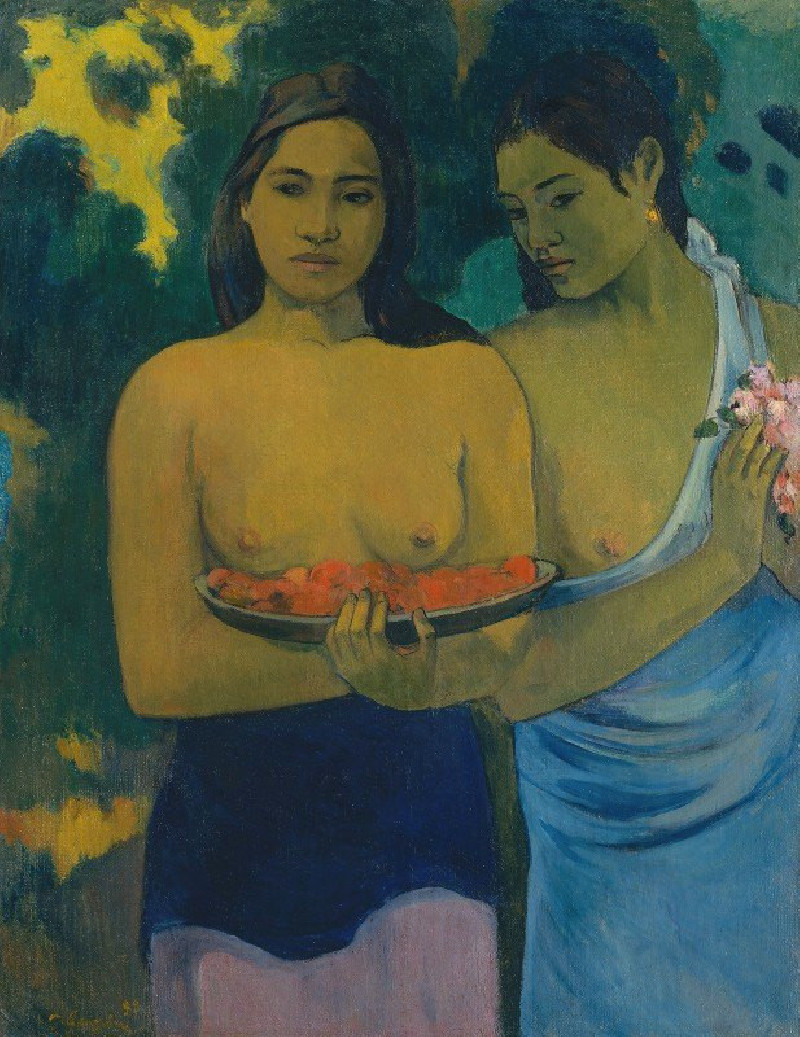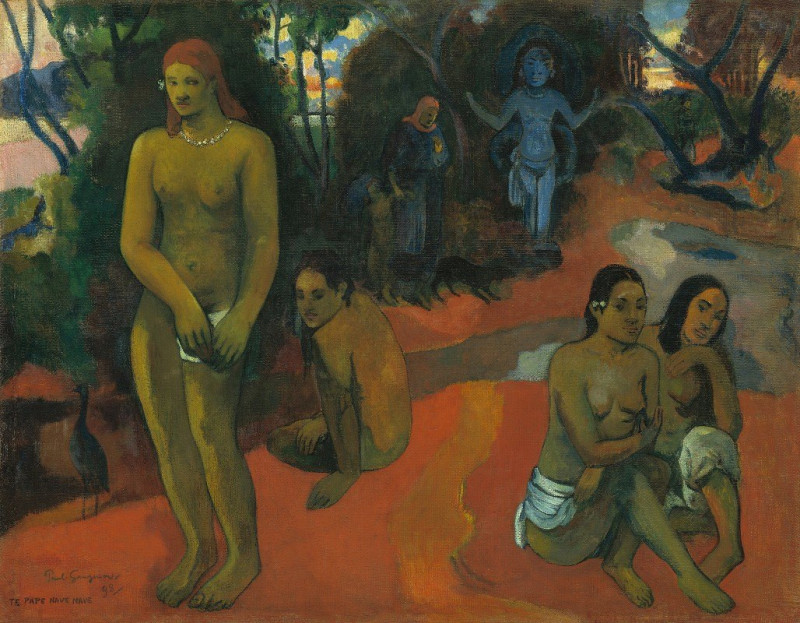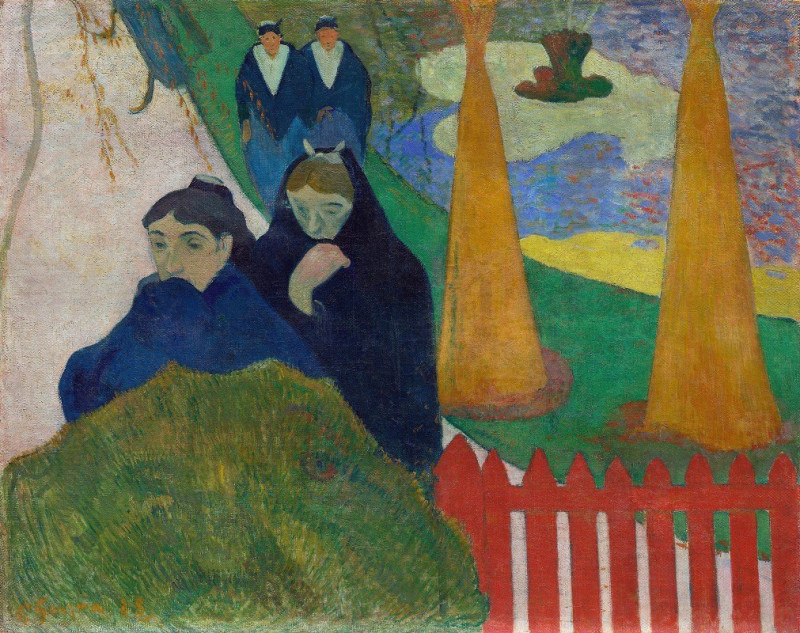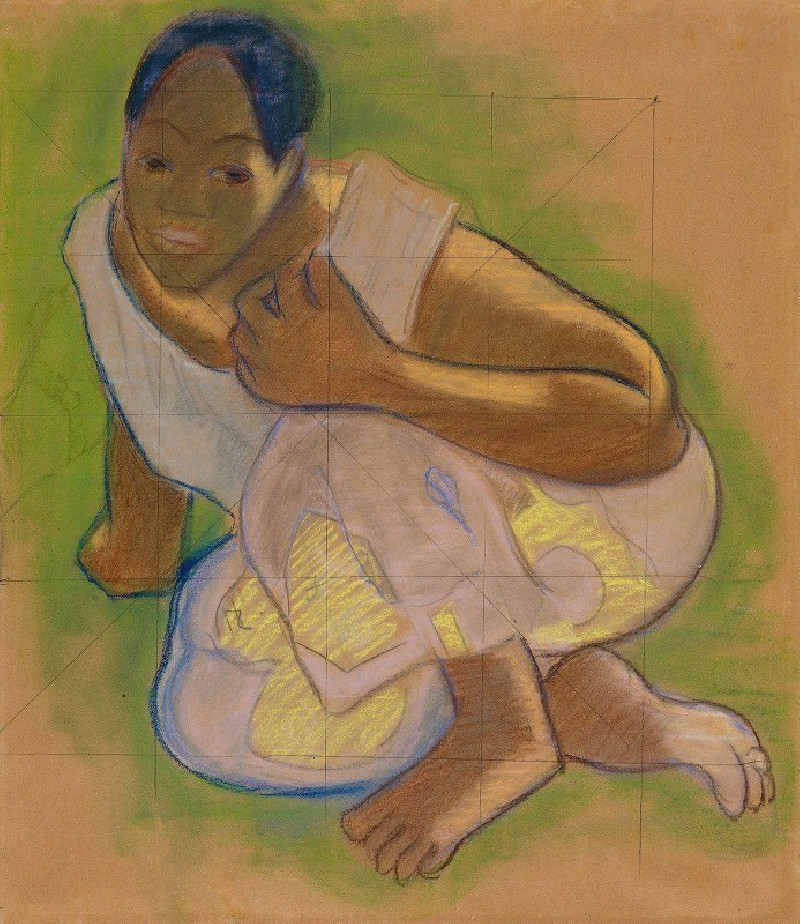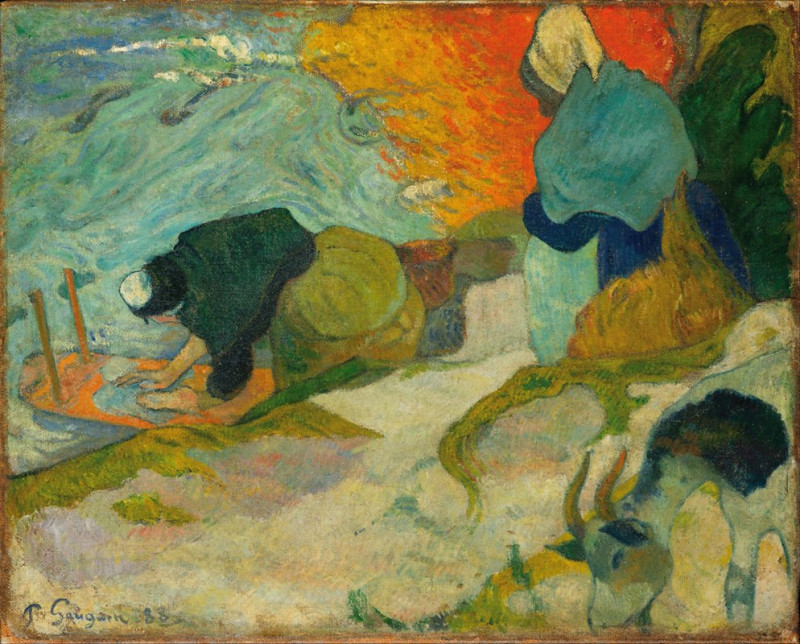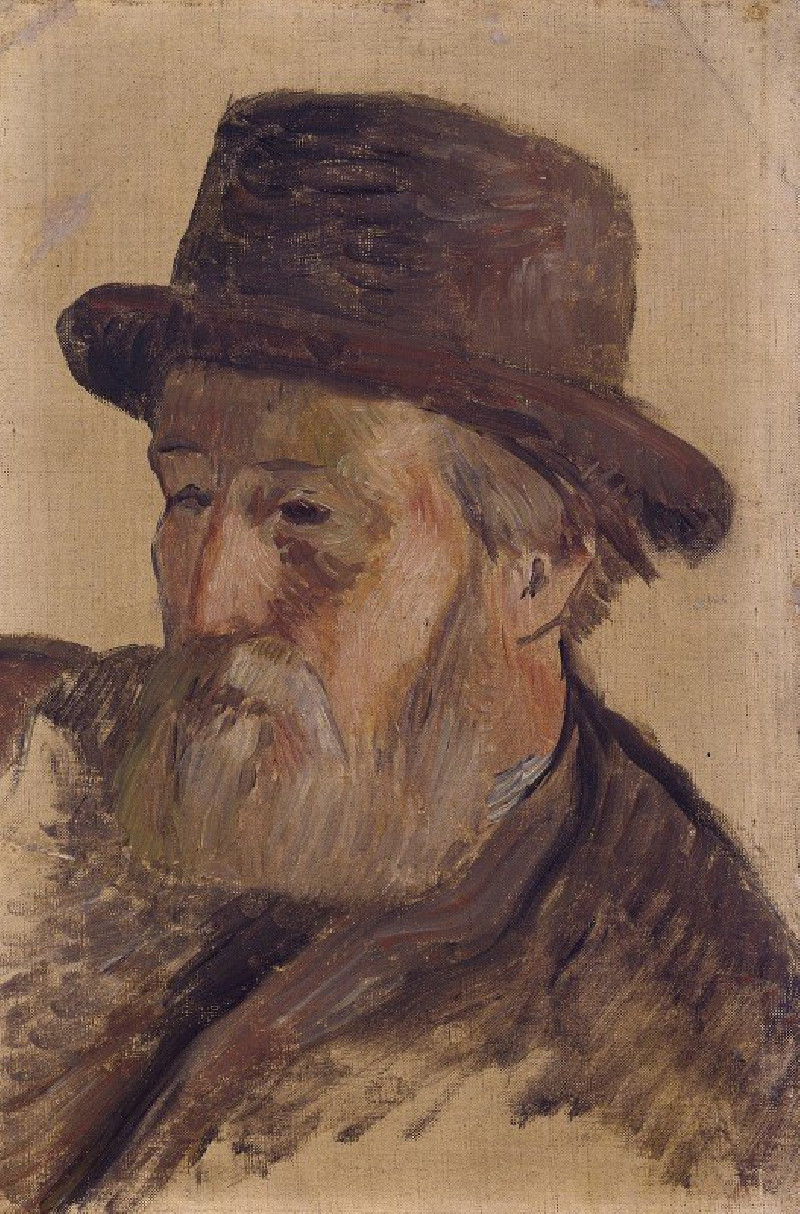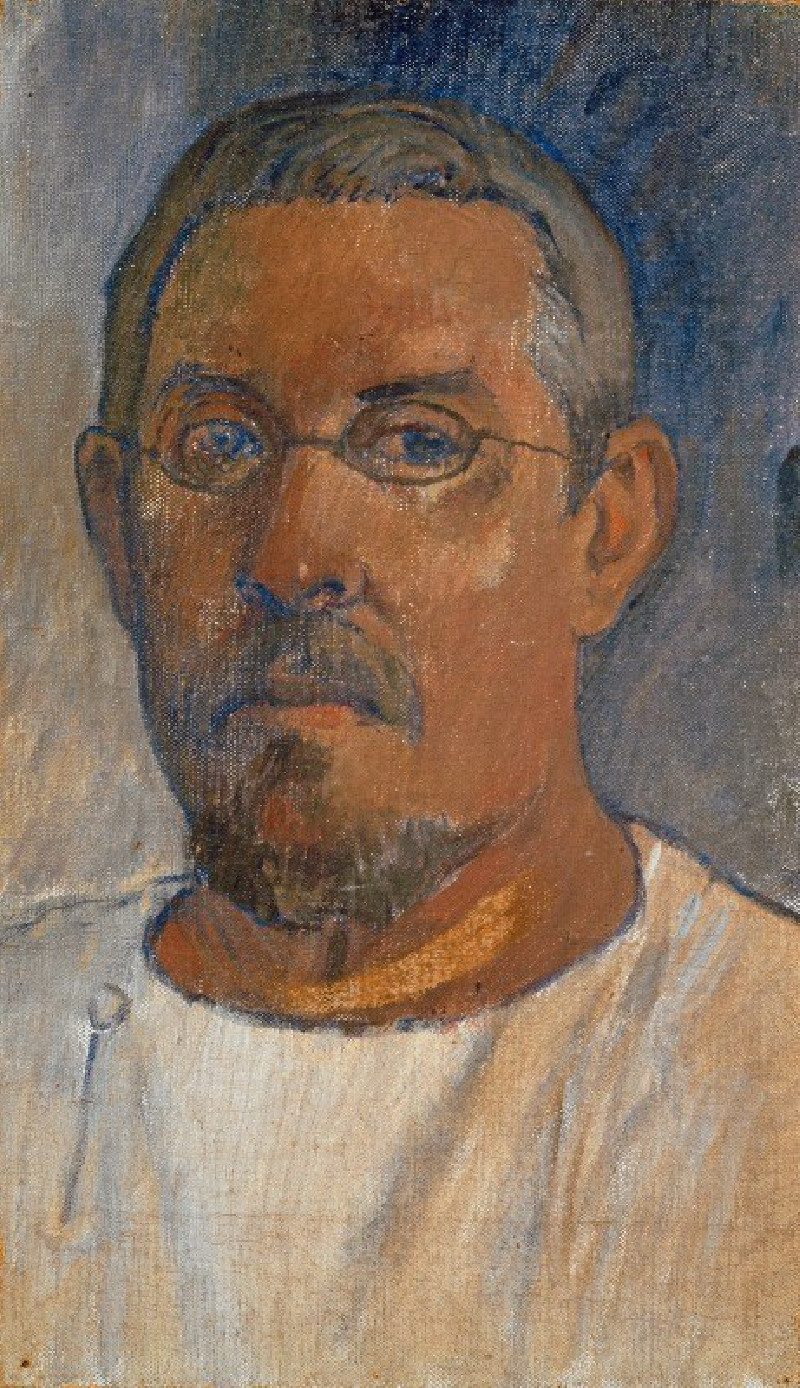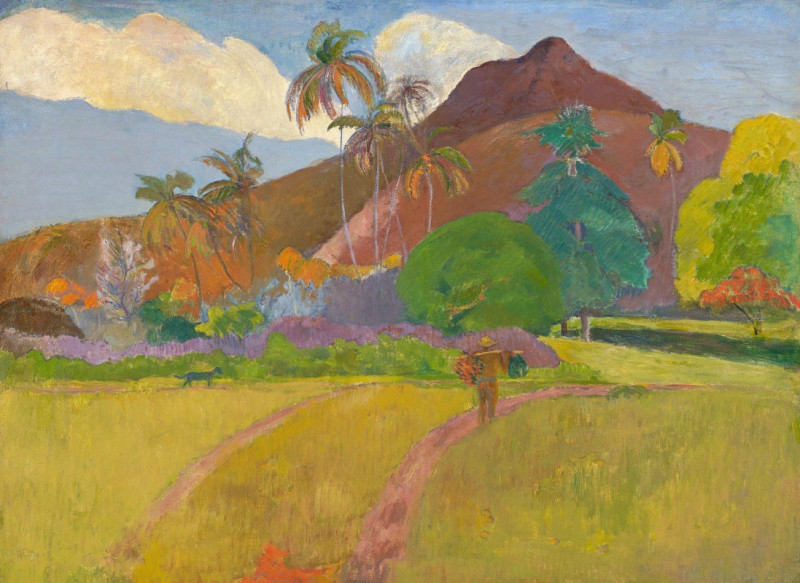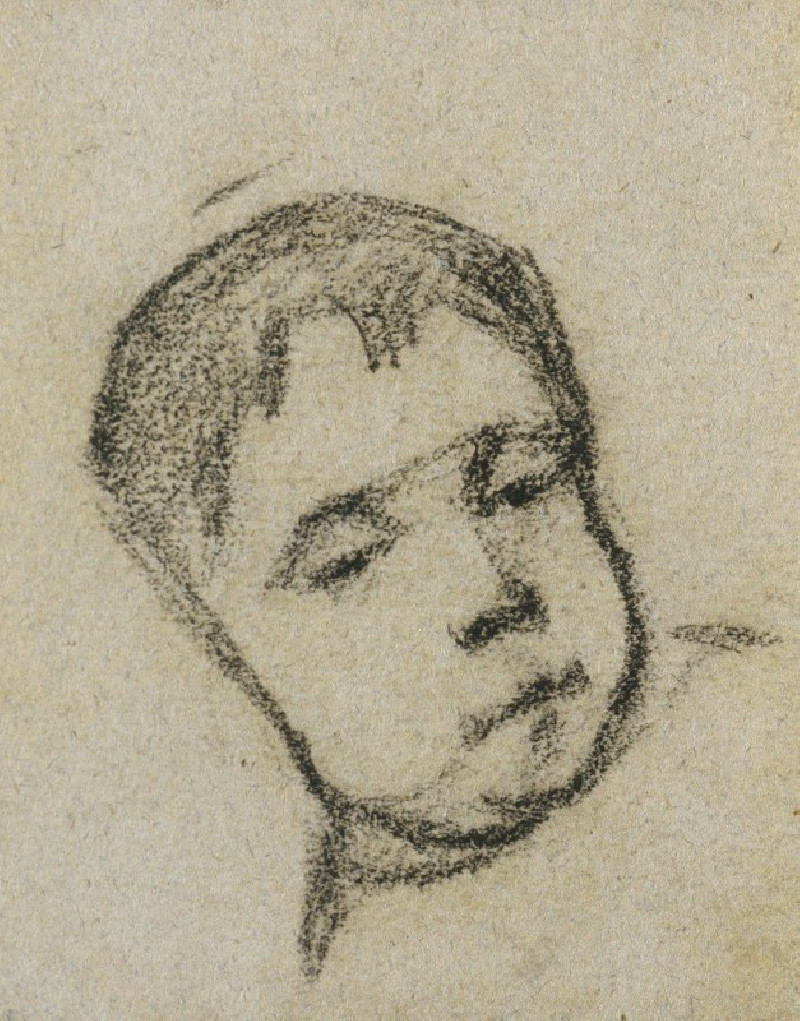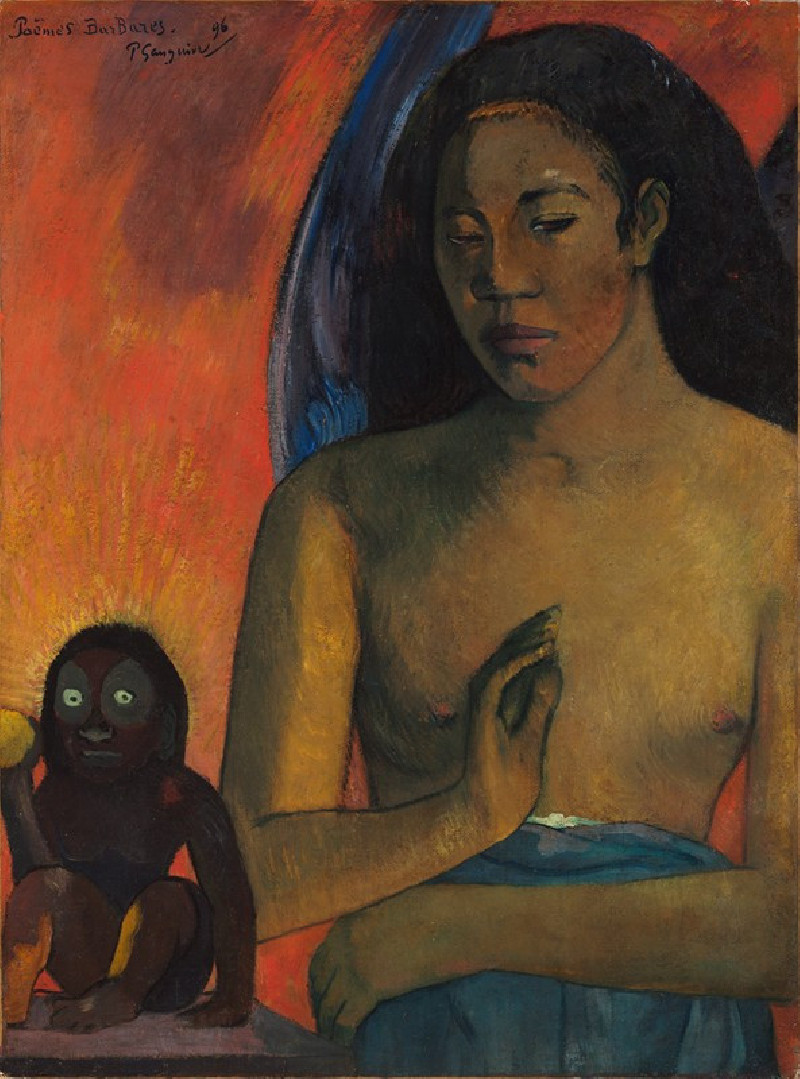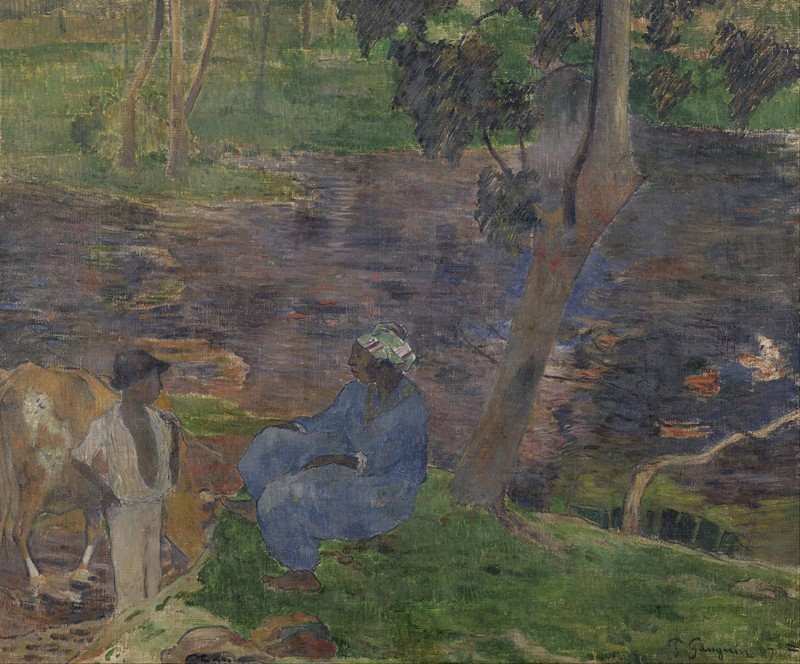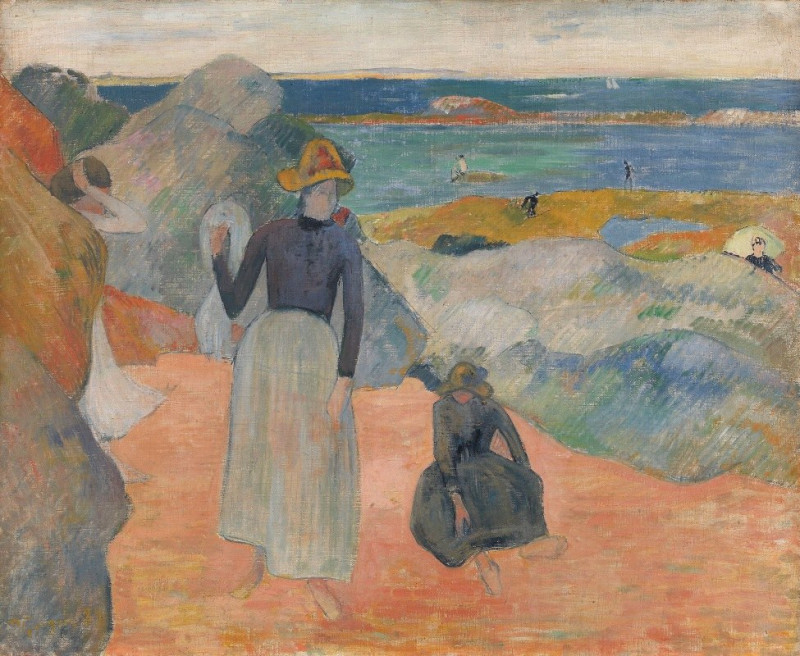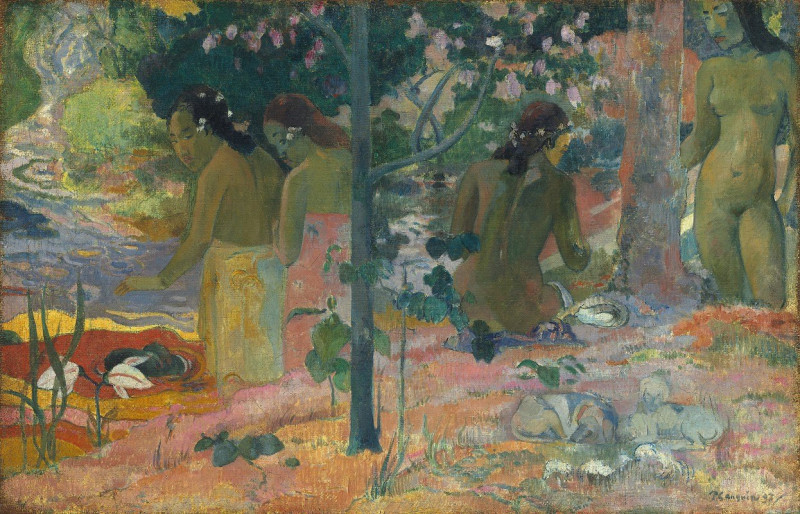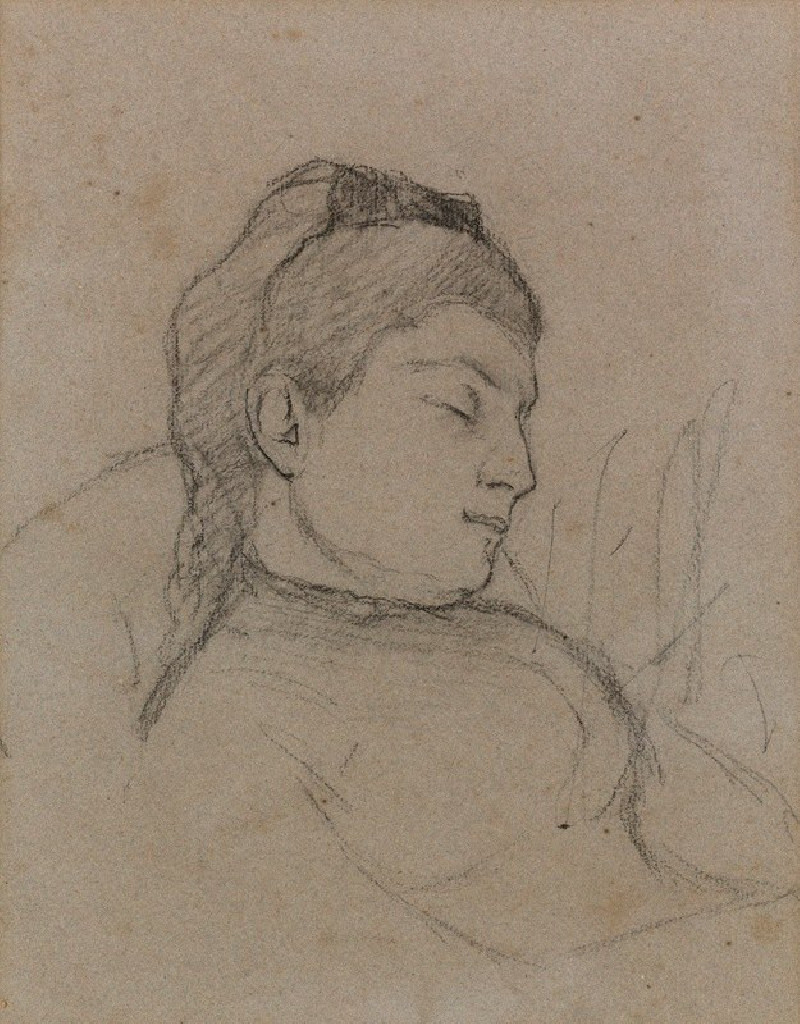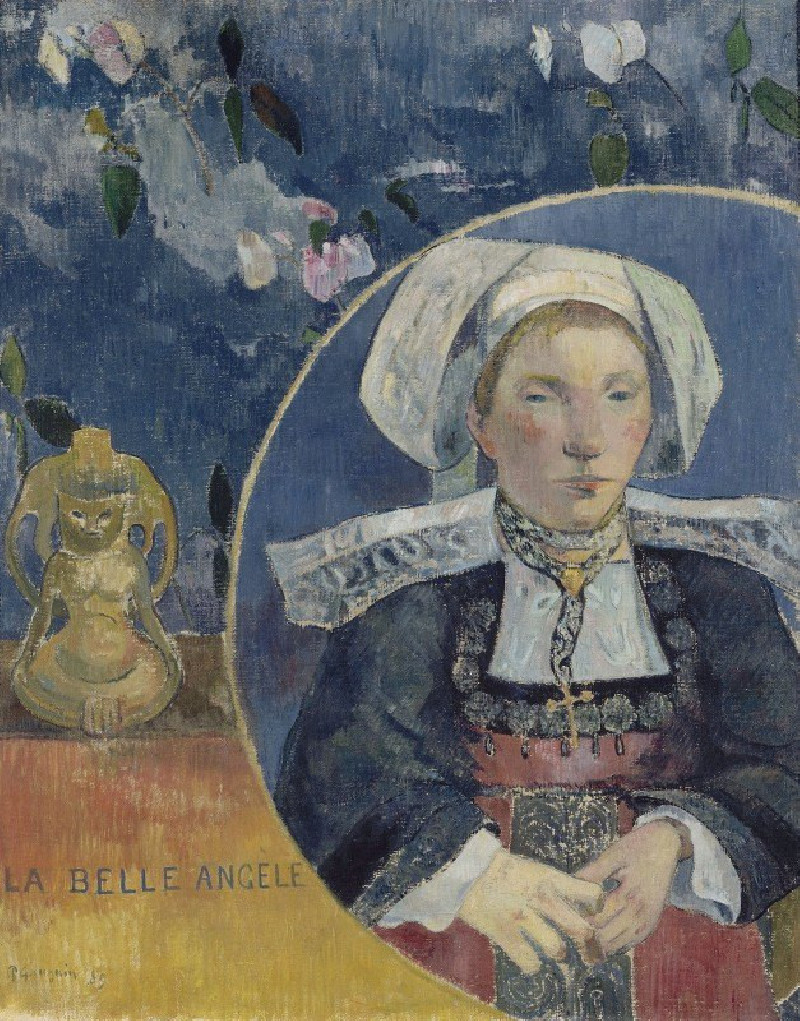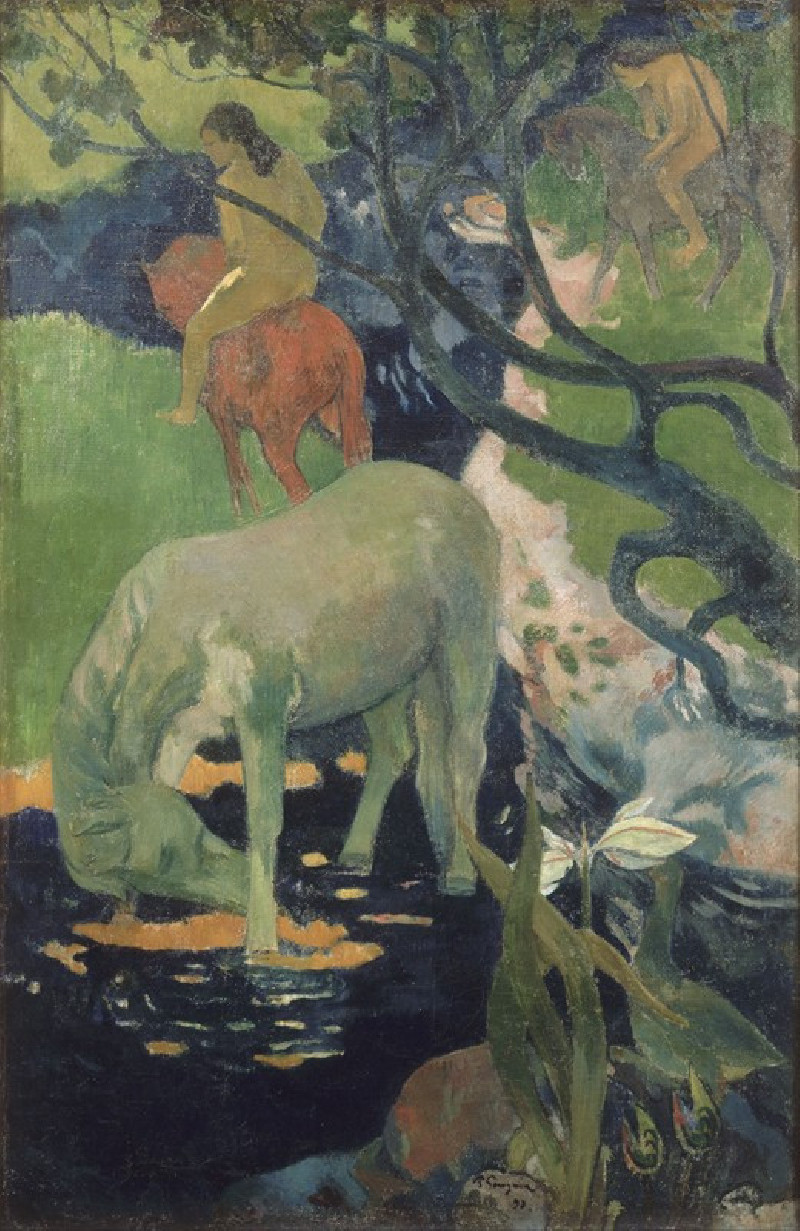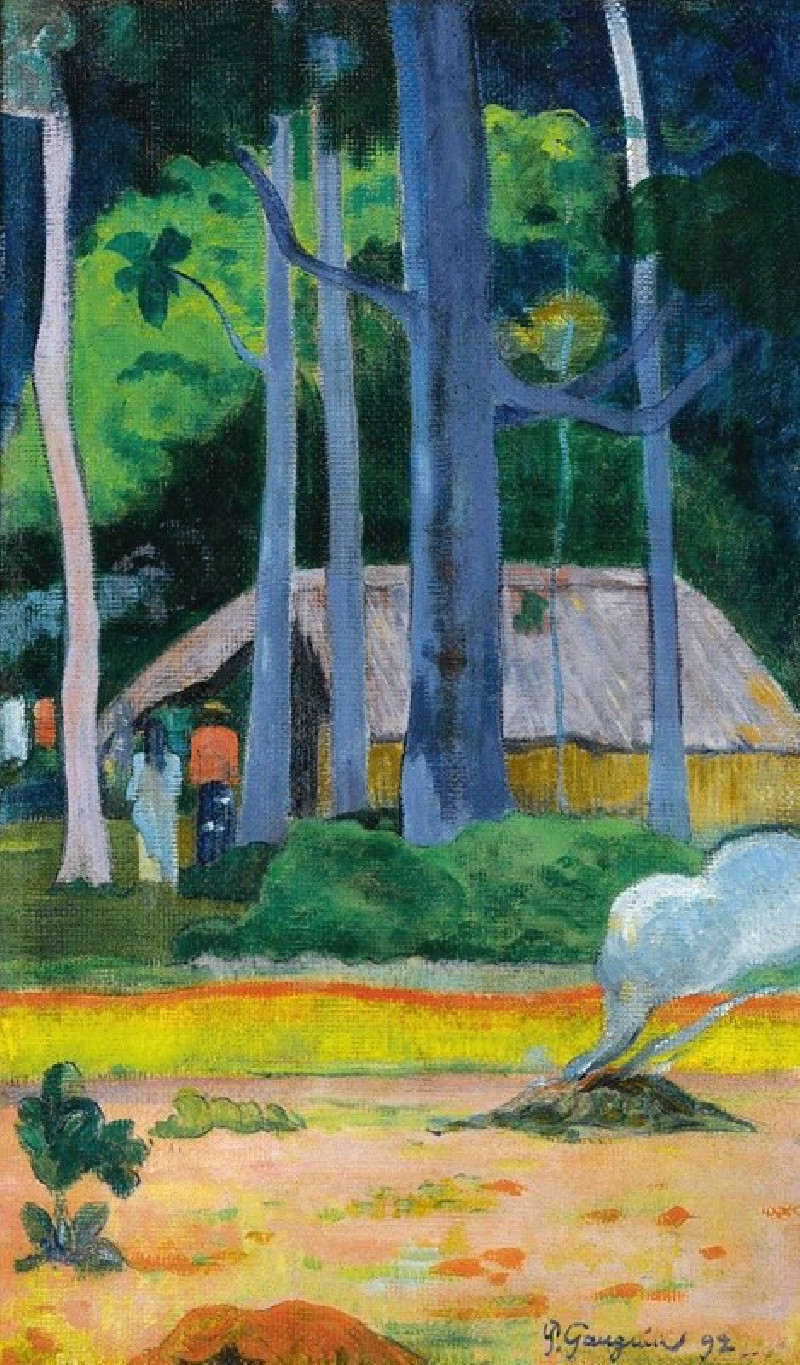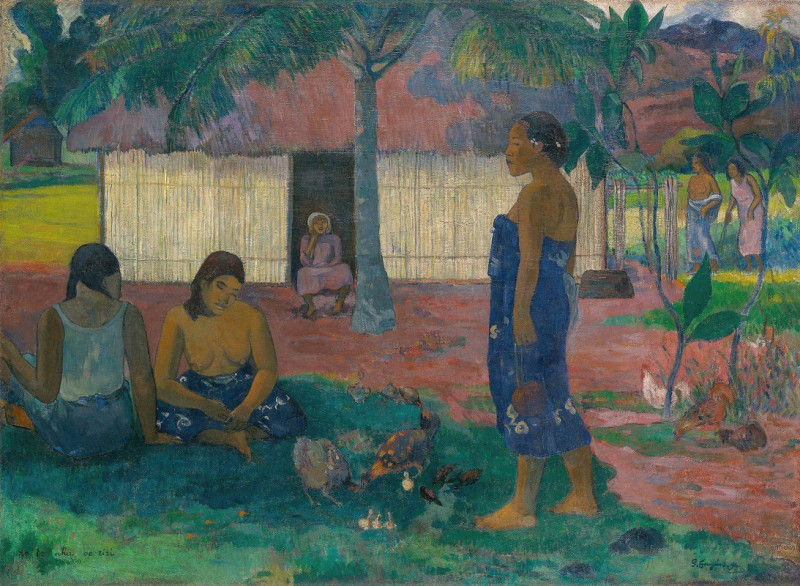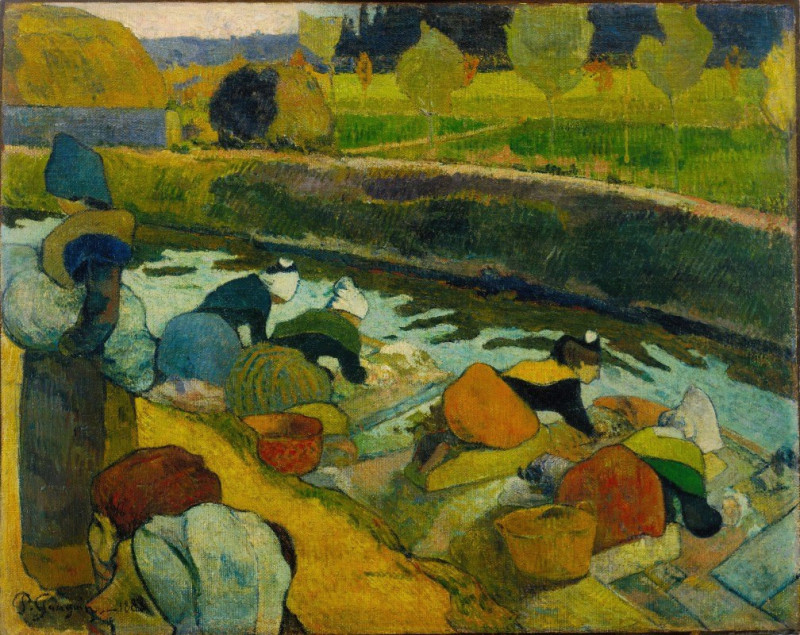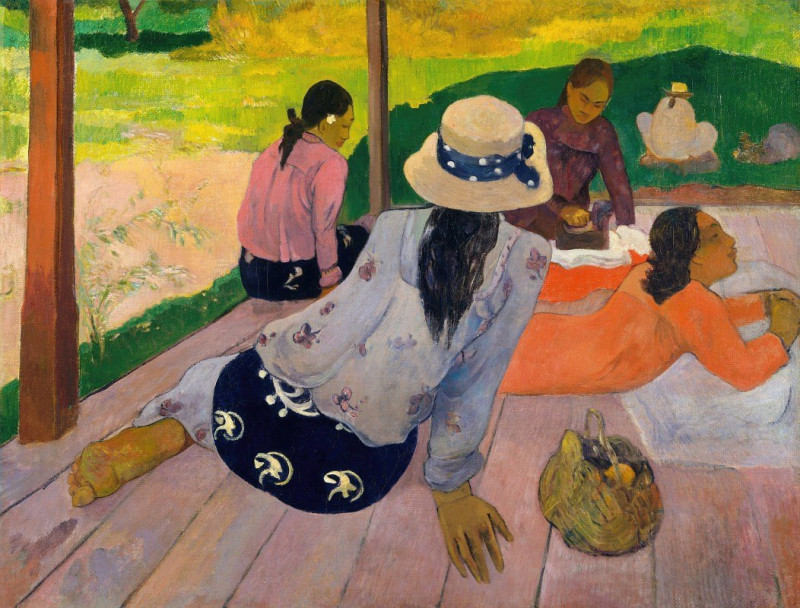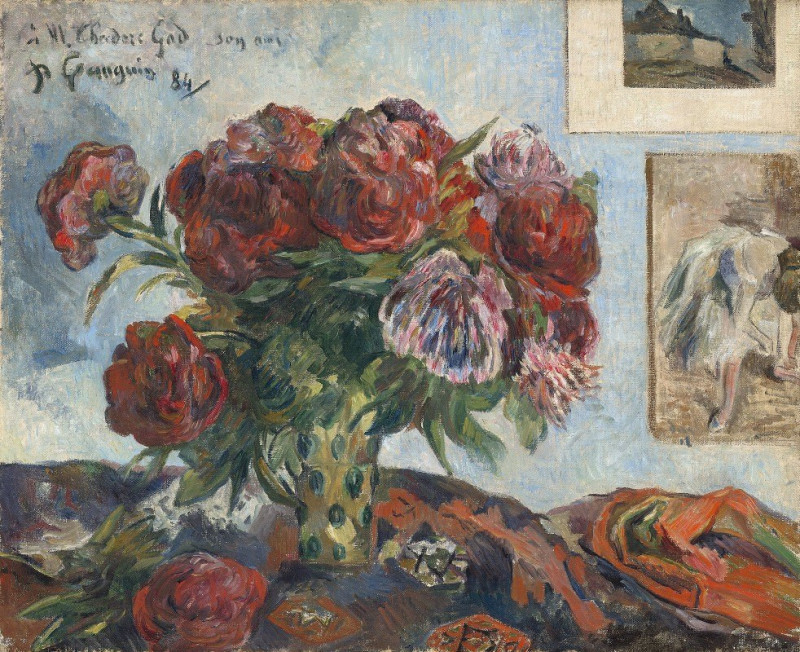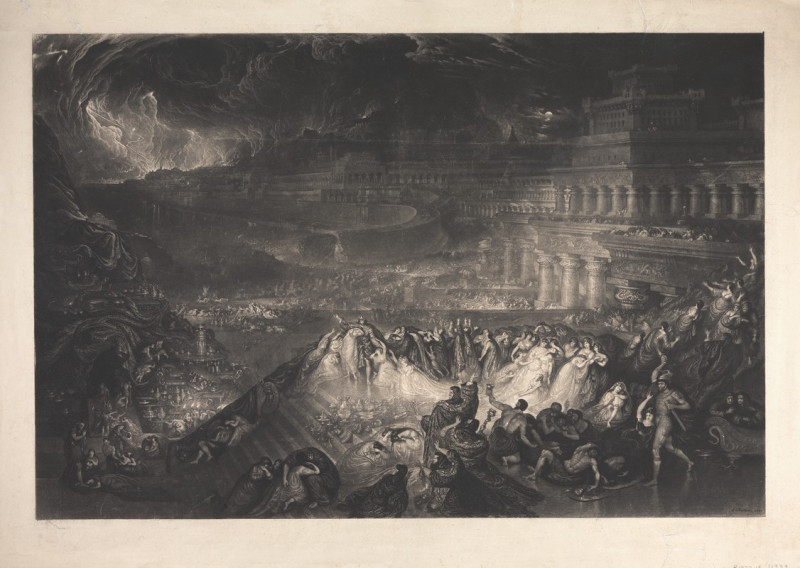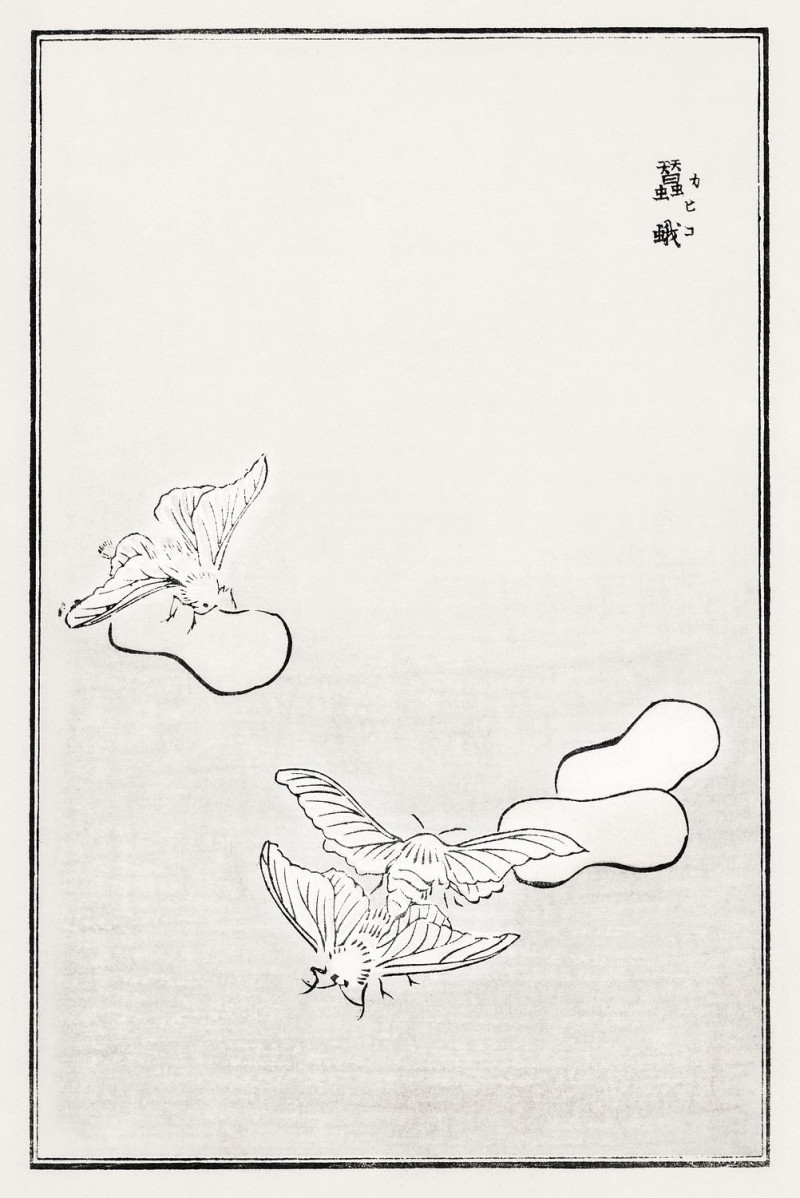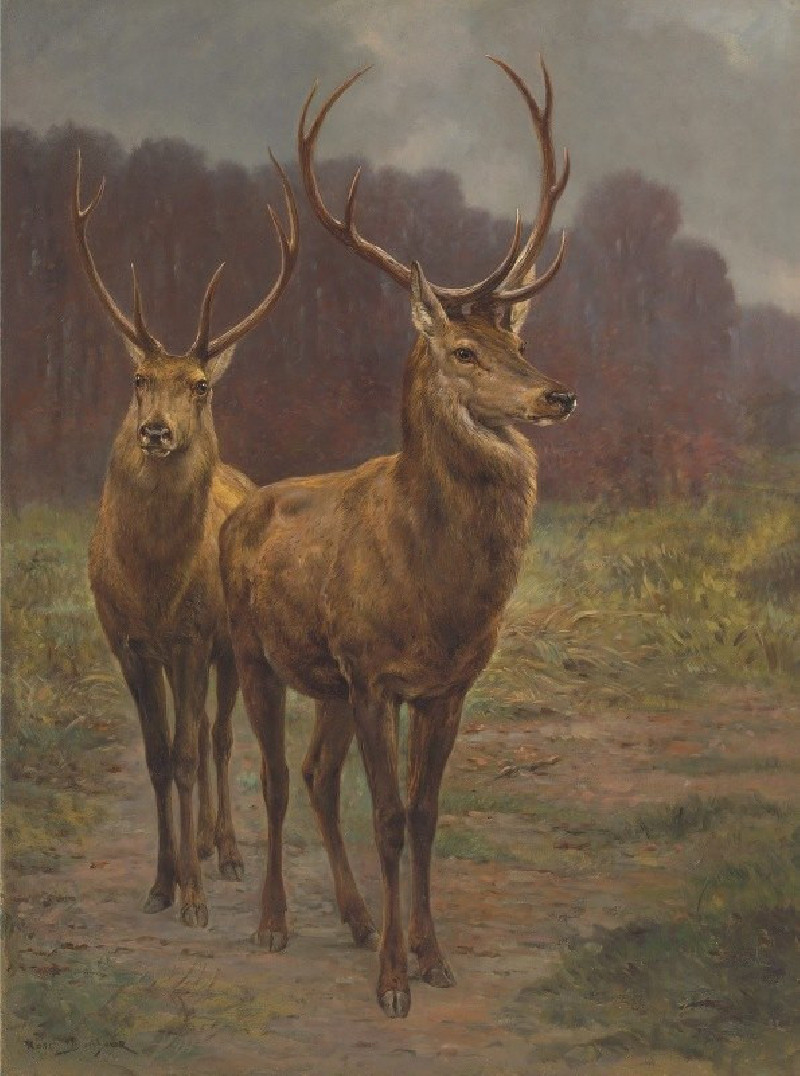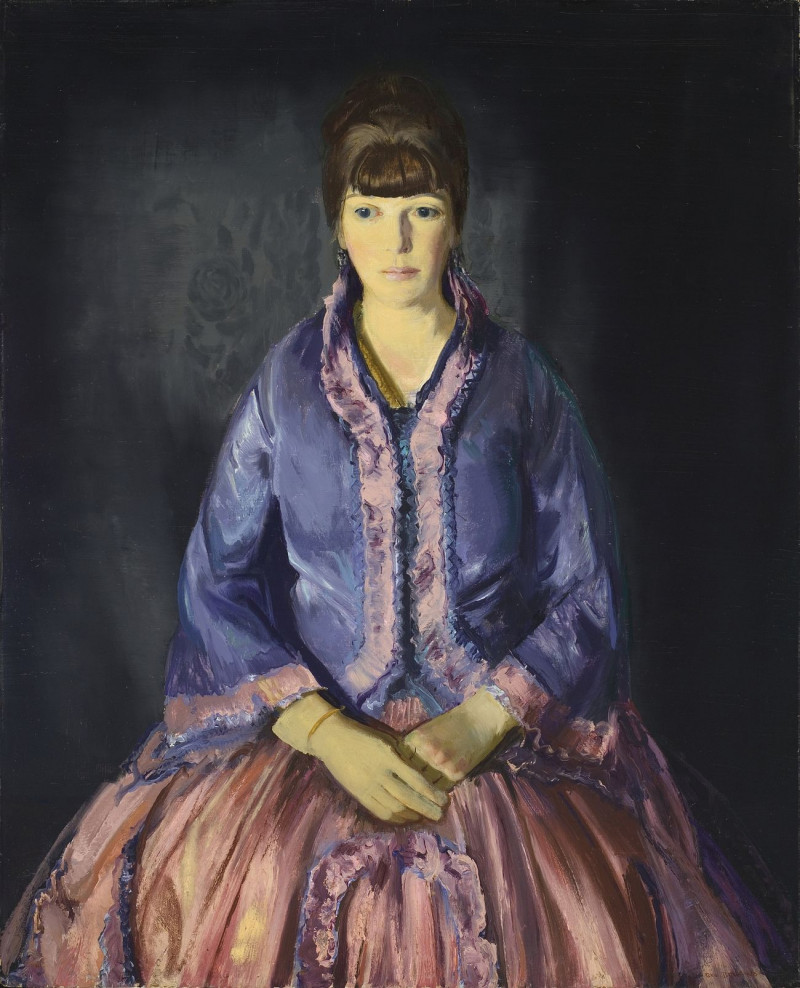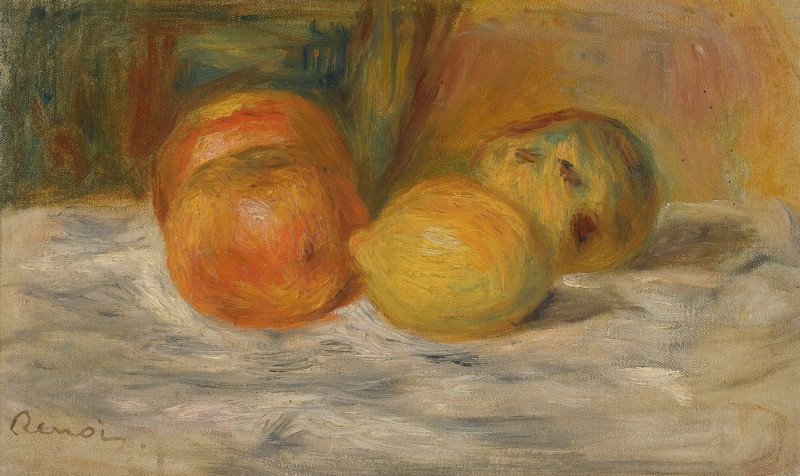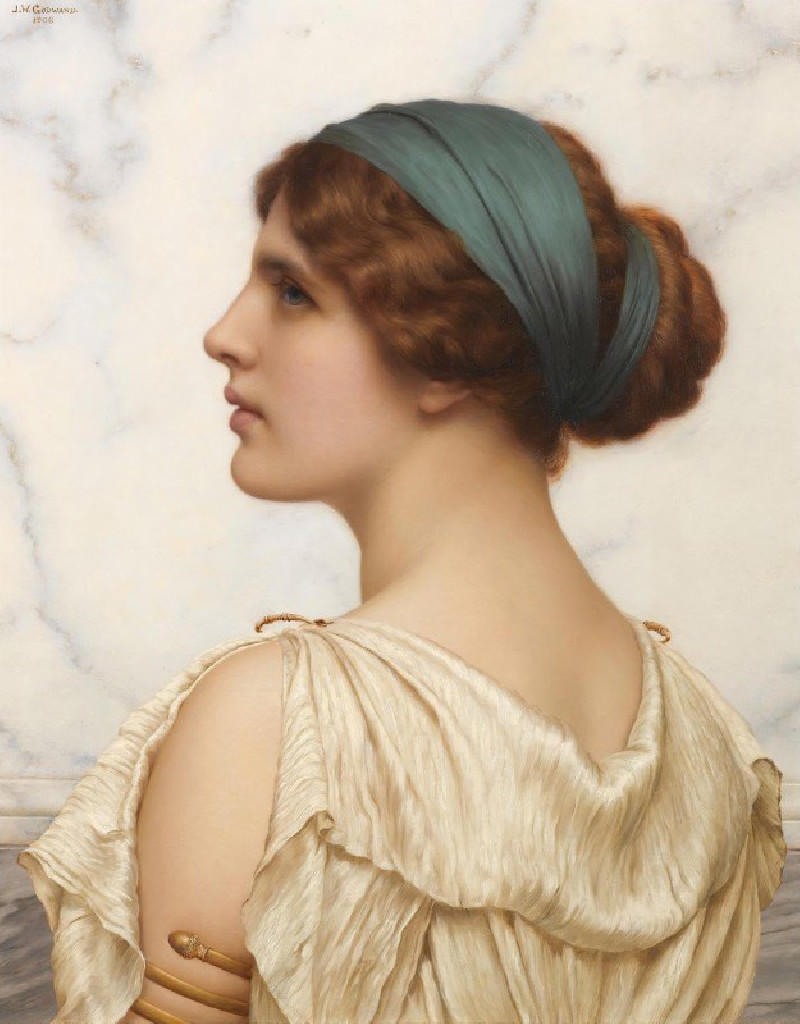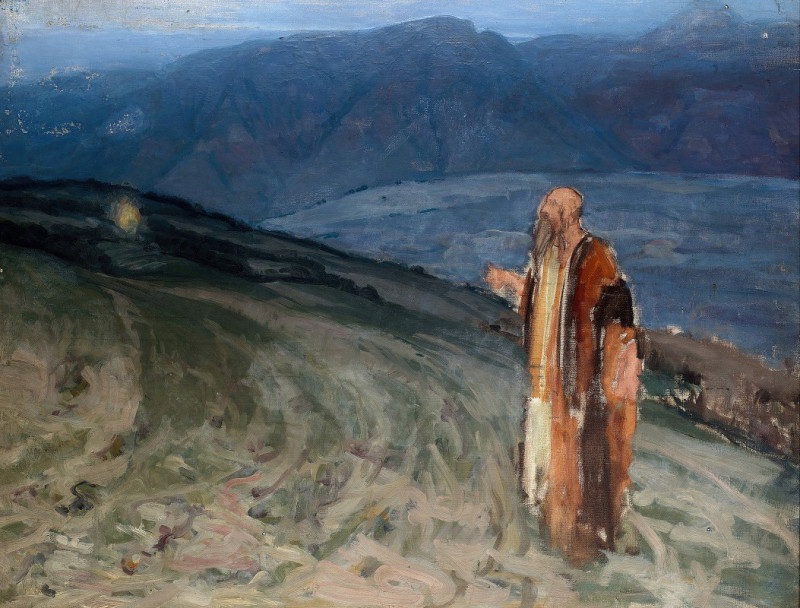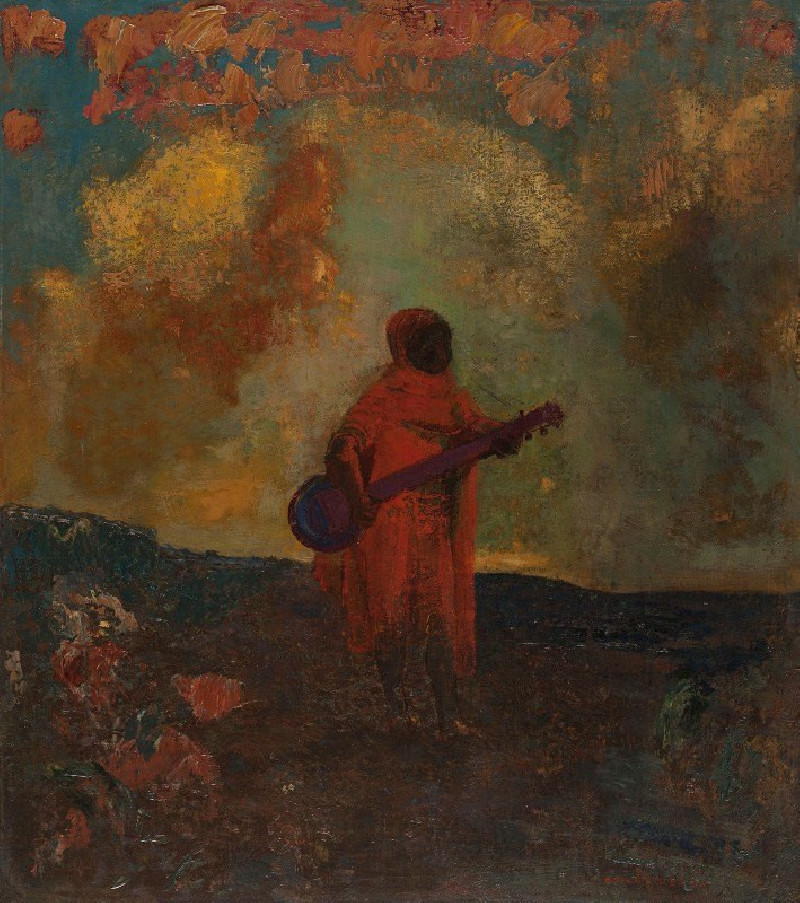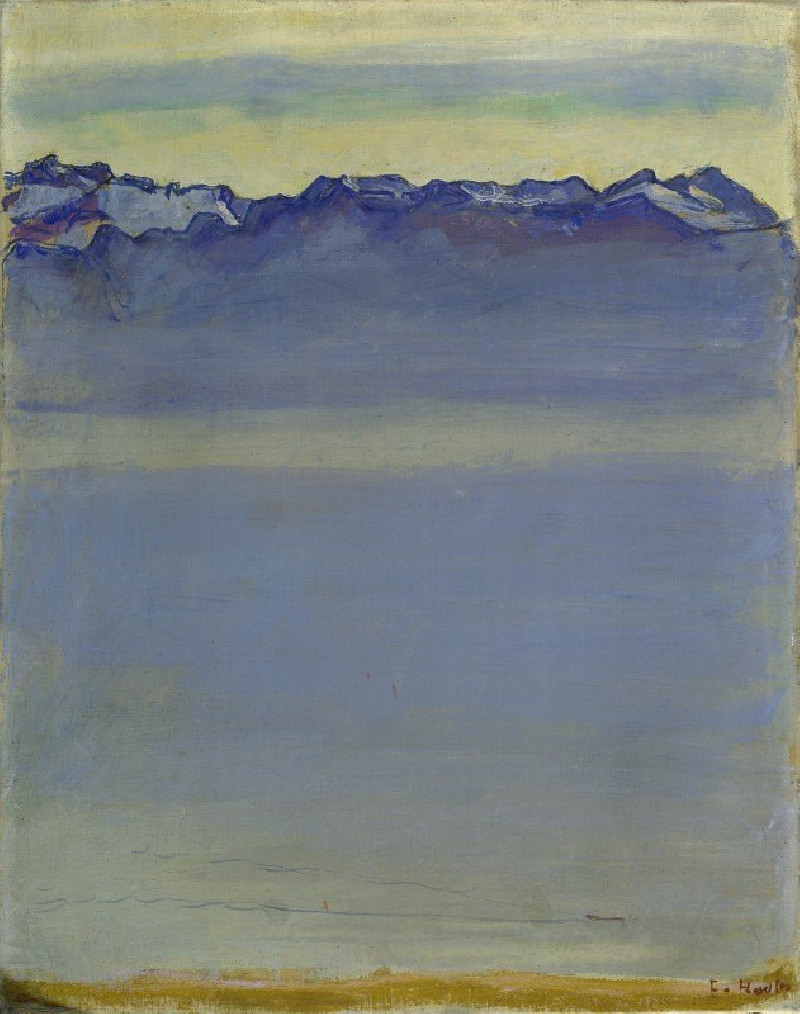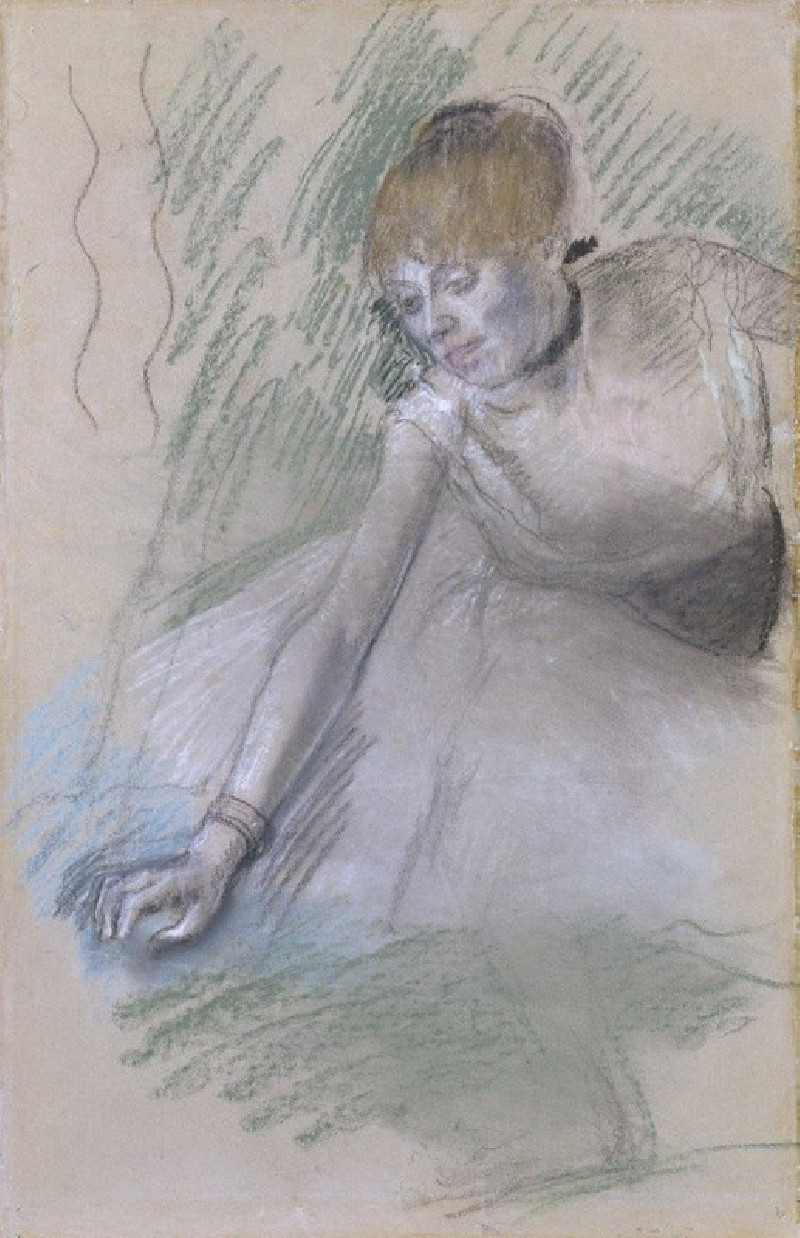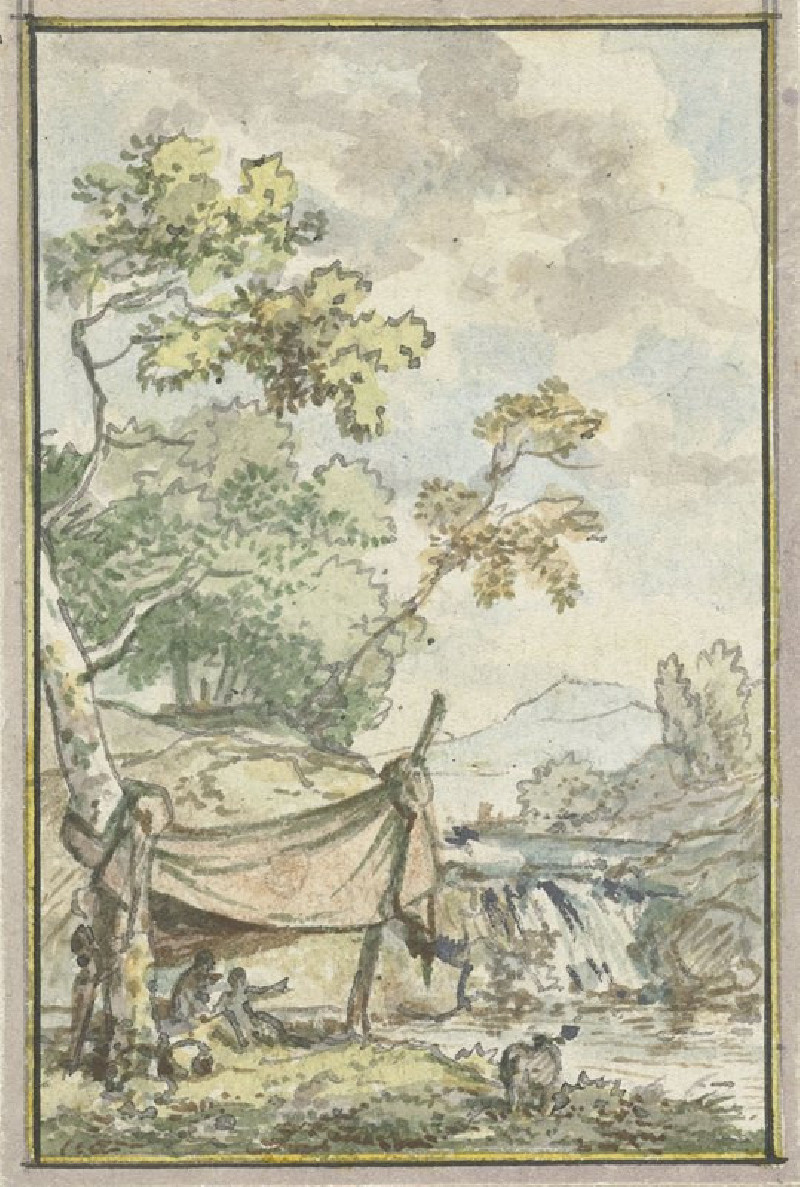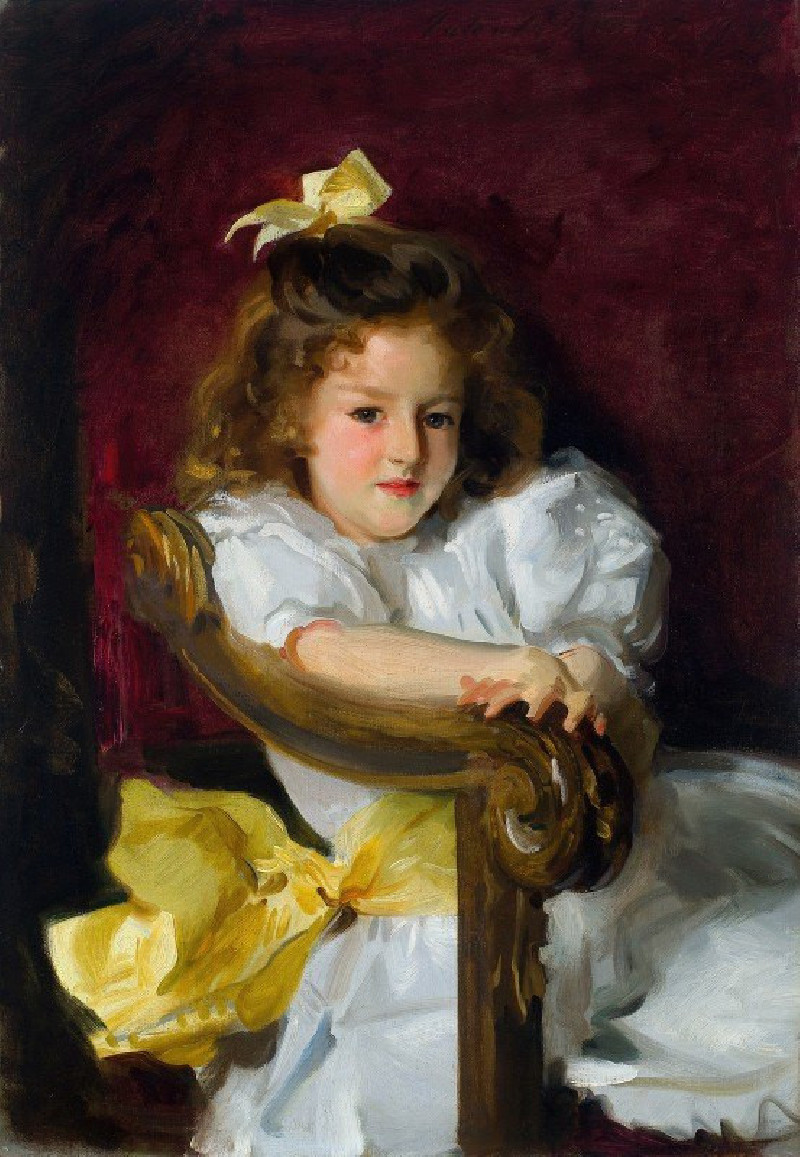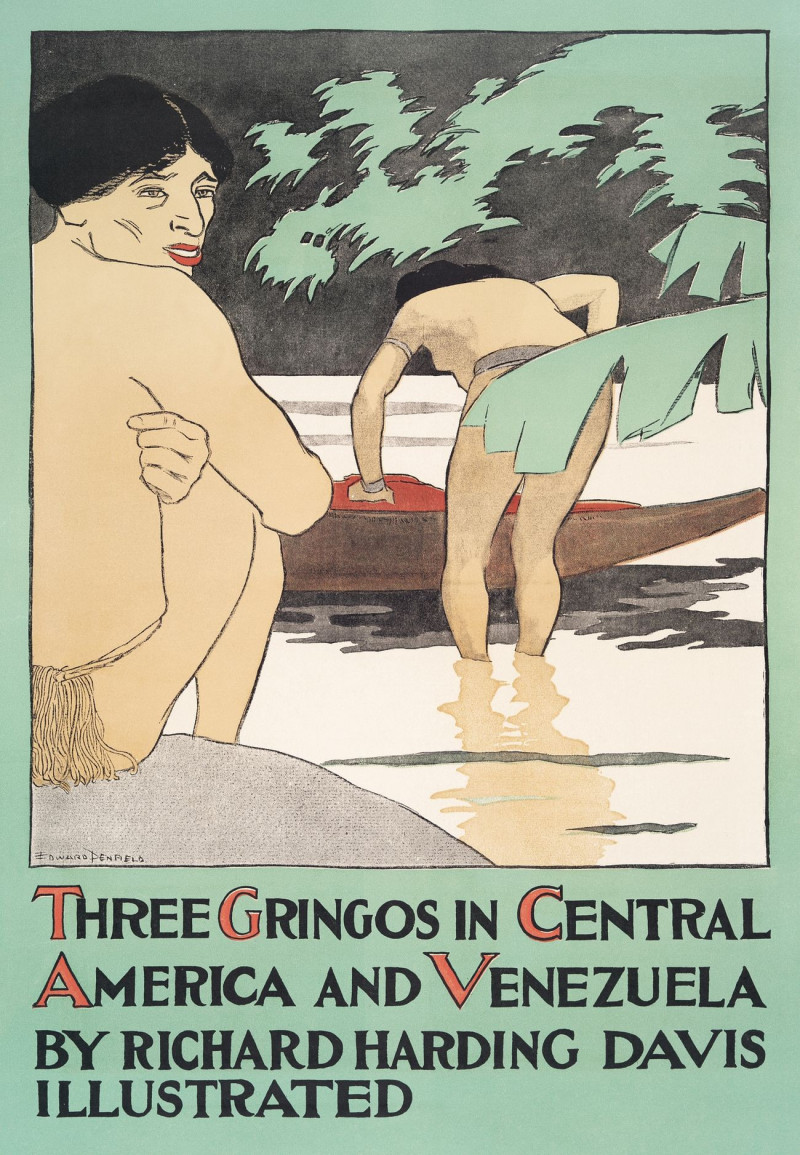Mahna no Varua Ino (The Demon Speaks) (1894-1895)
Technique: Giclée quality print
Recommended by our customers
More about this artwork
Titled "Mahna no Varua Ino" (The Demon Speaks), this compelling print by Paul Gauguin was created during 1894-1895, a period when the artist delved deeply into the rich and mysterious spiritual life of the Polynesian people. This artwork belongs to Gauguin's later works, reflecting his ongoing fascination with Tahitian culture and myth.The painting features dark, earthy tones and portrays a vivid, somewhat eerie scene. At the foreground, two figures are seated against an enigmatic, patterned backdrop. Dominated by a spectral presence, or perhaps a thought, the two figures assume postures that suggest contemplation or distress. The figure on the left, clutching their face, exudes an intense emotional expression possibly tied to the demonic influence implied by the work's title.Gauguin's use of bold colors and abstract forms encapsulates the essence of the spiritual and supernatural themes he explored during his time in Tahiti. This piece invites viewers into an introspective dialogue with the unseen, encouraging interpretations that delve into the realms of mythology, emotion, and the human psyche.
Delivery
Returns
Eugène Henri Paul Gauguin was a French Post-Impressionist artist. Unappreciated until after his death, Gauguin is now recognized for his experimental use of color and Synthetist style that were distinct from Impressionism. Toward the end of his life, he spent ten years in French Polynesia. The paintings from this time depict people or landscapes from that region.

